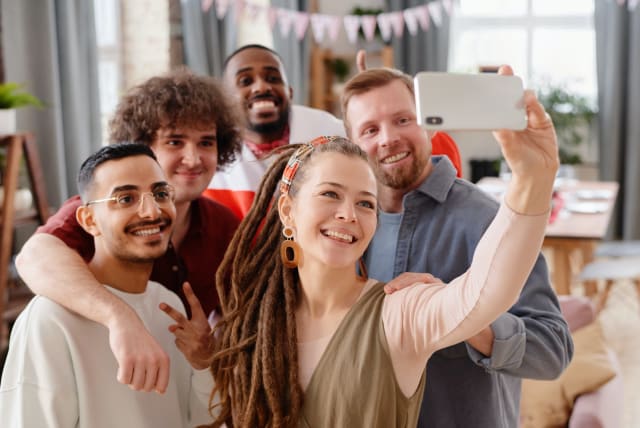How do people use selfies to communicate? Psychologist explains - study

People have used self-portraits to communicate information about themselves for centuries, but digital cameras have made it easy to share a self-portrait than ever before.
Although the term “selfie” – a photograph taken of yourself or with others using a smartphone or digital camera and often shared on social media –is now marking its 21st birthday, there has been a lack of clear classification of their different types. They are taken to communicate about mental conditions, aims, loves, and commitments, but until now, we lack a unified nomenclature or established classification system for selfies.
Most people today have experience with taking and sharing selfies, using them as a very compact format of self-reference to express ourselves, tell stories about our current life, and show our moods in a compressed form
People have used self-portraits to communicate information about themselves for centuries, but digital cameras have made it easy to share a self-portrait than ever before. But how do people use them to communicate?
How do people use selfies to communicate?
Dr. Tobias Schneider, a psychologist at Germany’s University of Bamberg’s Graduate School of Affective and Cognitive Sciences, set out to investigate the semantics of selfies. He noted in his new study in Frontiers in Communication entitled “On the Semantics of Selfies (SoS)” that selfies have been known for nearly 200 years in photography and over 500 years in paintings.
Previous studies have established that people taking a selfie do so for self-expression, documentation, and performance. Some scientists have used accompanying hashtags and other metadata to decipher the meanings people try to convey with selfies, but this doesn’t consider the picture itself.
To understand what kinds of meaning people ascribe to different selfies, the researchers asked people to describe their first impressions of a sample of selfies. These associations could then be compiled to work out how different types of selfies are understood by viewers.
“Most research addresses direct visual factors, neglecting associative factors that viewers have in mind when browsing through our selfie-oriented world,” said Prof. Claus-Christian Carbon, a senior author. “Here we used personal reports and associations to describe and categorize selfies in a systematic way.” The scientists created their test dataset from a database of selfies called Selfiecity, using only self-portraits without any text – either taken by a mobile camera, using an individual’s own hands or a selfie stick. The 1,001 selfies remaining were presented at a standard size on a plain grey background.
The scientists recruited 132 participants online. To avoid tiring participants, they used an algorithm to select 15 random selfies for each participant to review, ensuring that every selfie was evaluated by about the same number of people and that each one saw a variety of selfies. The scientists provided five text boxes per selfie for participants to write down their spontaneous reactions.
Schneider and Carbon processed this data to collapse the respondents’ first impressions into 26 categories, including mood-covered comments the respondents made about the selfie-taker’s mood. The scientists then analyzed how frequently these categories appeared in responses, and if they appeared together.
Cluster analysis identified five different clusters of categories that the authors called “semantic profiles.” The largest was named “aesthetics” –photos that presented aesthetic experience or style. This was very closely followed by |imagination” – pictures that led the respondents to imagine where the selfie-taker was or what they were doing; and “trait” – images that elicited personality-related terms. Less popular but still substantial were the clusters “state” – photos that looked at mood or atmosphere, and “theory of mind” – images induced the respondents to make assumptions about a selfie-taker’s motives or identity.
Each cluster showed a close association of different categories from respondents’ first impressions, suggesting the respondents were picking up on visual language which we use to communicate different aspects of ourselves – whether that’s our terrible mood or our great outfit.
“We were quite impressed how often the category ‘theory of mind’ was expressed, because this is a very sophisticated way of communicating inner feelings and thoughts,” said Schneider. “It shows how effective selfies can be in terms of communication.” The scientists suggested that these semantic profiles may not be expressed or understood in the same way worldwide, so more research is needed.
“Research never ends,” Schneider concluded. “We need more free reports on selfies, more descriptions of how people feel about the depicted persons and scenes to better understand how selfies are used as a compact way of communicating to others. We need larger, more diverse, and cross-cultural samples in the future to understand how different groups and cultures use selfies to express themselves,” added Carbon.
Jerusalem Post Store
`; document.getElementById("linkPremium").innerHTML = cont; var divWithLink = document.getElementById("premium-link"); if (divWithLink !== null && divWithLink !== 'undefined') { divWithLink.style.border = "solid 1px #cb0f3e"; divWithLink.style.textAlign = "center"; divWithLink.style.marginBottom = "15px"; divWithLink.style.marginTop = "15px"; divWithLink.style.width = "100%"; divWithLink.style.backgroundColor = "#122952"; divWithLink.style.color = "#ffffff"; divWithLink.style.lineHeight = "1.5"; } } (function (v, i) { });

